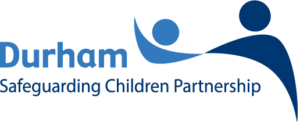Sexual abuse involves forcing or enticing a child or young person to take part in sexual activities, not necessarily involving a high level of violence, whether or not the child is aware of what is happening. The activities may involve physical contact, including assault by penetration (for example, rape or oral sex) or non-penetrative acts such as masturbation, kissing, rubbing and touching outside of clothing. They may also include non-contact activities, such as involving children in looking at, or in the production of, sexual images, watching sexual activities, encouraging children to behave in sexually inappropriate ways, or grooming a child in preparation for abuse. Sexual abuse can take place online and technology can be used to facilitate offline abuse. Sexual abuse is not solely perpetrated by adult males. Women can also commit acts of sexual abuse, as can other children.
(Definition provided by Working Together)
Different types of sexual abuse
Harmful Sexualised Behaviour (HSB)
HSB often refers to sexually harmful behaviour towards children by another child, demonstrating developmentally inappropriate, harmful, or abusive sexual behaviour. It can also be referred to as sexually harmful behaviour or sexualised behaviour. Harmful Sexualised Behaviour (HSB) can be a range or pattern of behaviour used to describe a spectrum of behaviours that might be exhibited toward younger and older children, classmates, and adults in a variety of settings. HSB is damaging to both the children who demonstrate it and those who are exposed to it.
Intra-familial sexual abuse
Intra-familial sexual abuse is sexual abuse that takes place within the family environment or surroundings. Not necessarily by a related family member, perpetrators may be family members, wider relatives, friends or close contacts of the family. More commonly the perpetrators are adult males, but important to know that abuse does take place by female perpetrators and children under the age of 18 can also be perpetrators of intra-familiar sexual abuse.
Extra-familial sexual abuse
Linked to contextual and complex safeguarding, extra-familial abuse refers to sexual harm and abuse that occurs to children outside of their family home and environment. Children are often more at risk in adolescent years because of their rapidly broadening social networks and contacts.
The term extra-familial abuse can also include child sexual exploitation and Peer on peer abuse (non-familial and non-sibling), including harmful sexual behaviours and domestic abuse among adolescent couples.
Wider reading and information
- Centre of expertise on child sexual abuse
- Centre of expertise on child sexual abuse – key messages from research
- The Lucy Faithfull Foundation
- Stop It Now!
Supporting parents and carers
For parents and carers, discovering that their child may have been sexually abused is one of the most devastating events they can experience. Parents and carers have a significant influence on how a child will understand and respond to what has happened to them. Support from practitioners to help the whole family recover can increase the likelihood of the best possible outcome for the child. Research shows that one of the most significant factors in affecting the longer-term impacts of sexual abuse is the support the child receives from their main caregivers and wider family.
The Supporting Parents and Carers guide by the Centre for Expertise in Child Sexual Abuse is designed to help professionals understand more about how child sexual abuse affects parents and their children, so that they can support them effectively.
- It includes situations where the child has been sexually abused by an adult or adults or experienced another child’s harmful sexual behaviour, whether this has taken place inside or outside their family environment.
- It explores the impact of child sexual abuse carried out in different contexts, and how such abuse can affect families differently.
- It explains why parents need to receive a supportive response from professionals, and what this involves.
- It provides lists of resources and sources of support for professionals to support their work and share with the parents they are working with.
